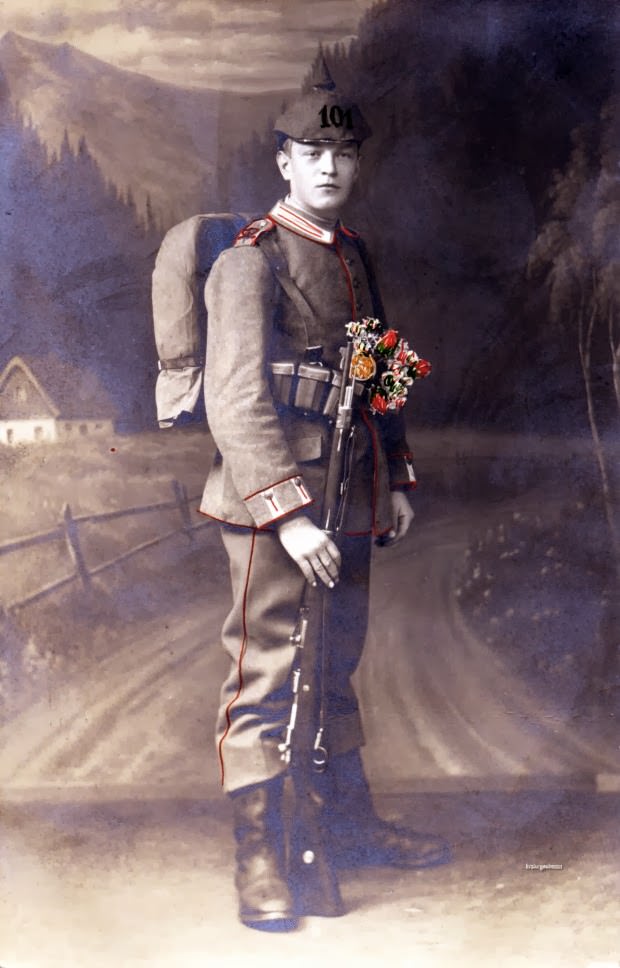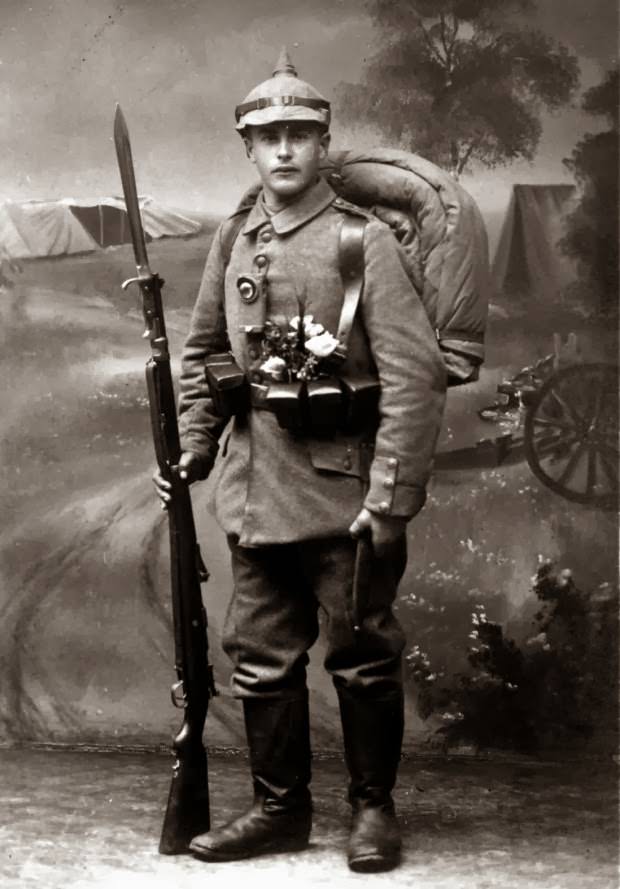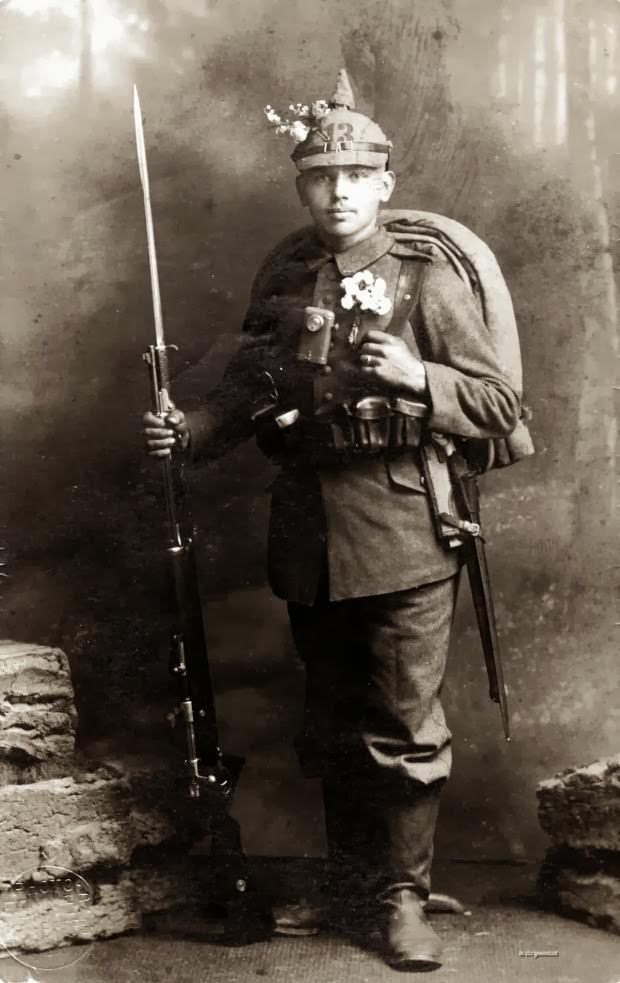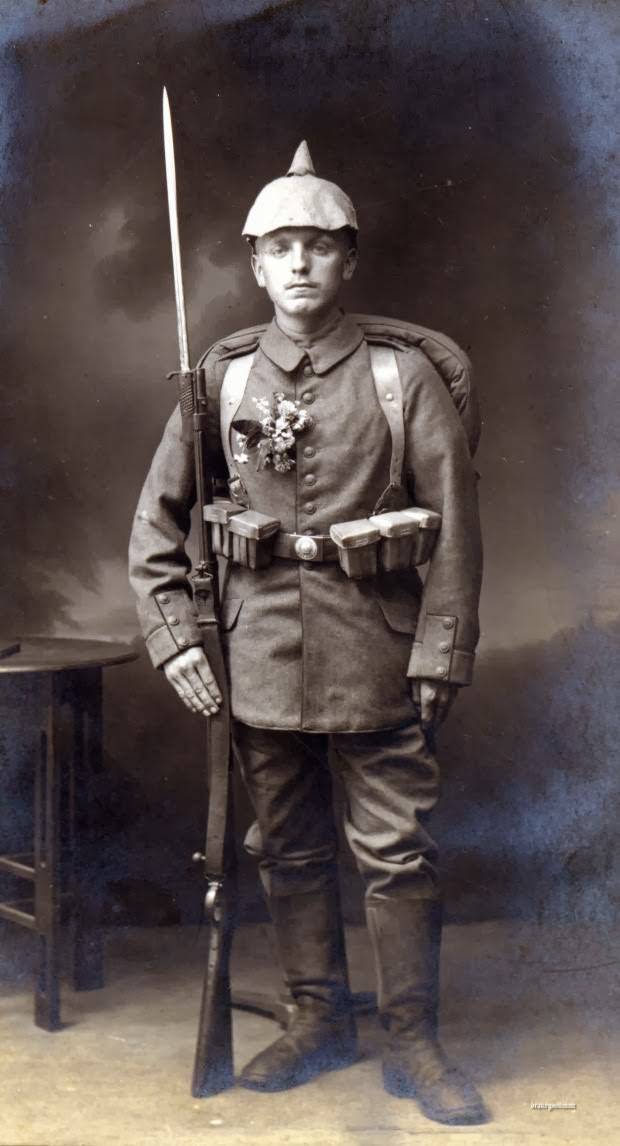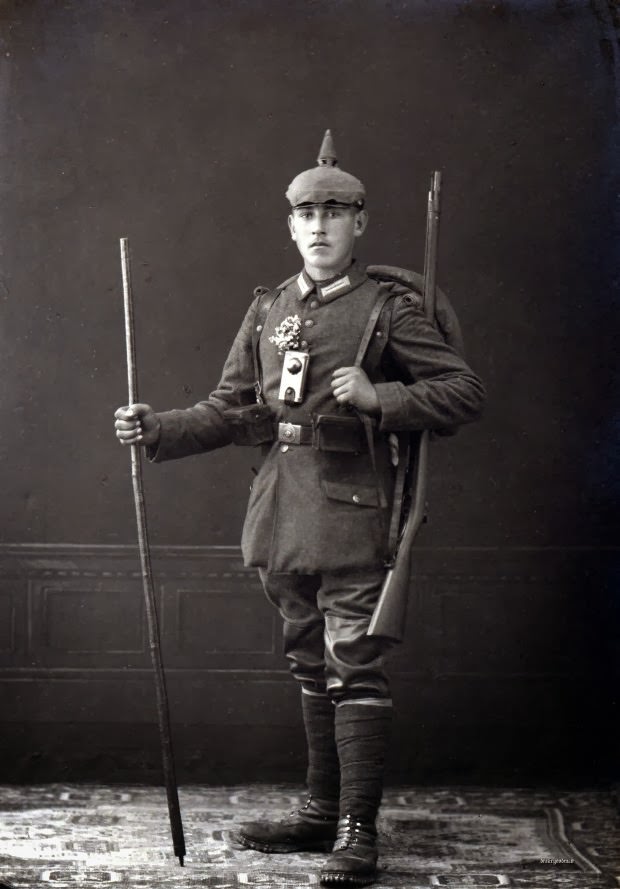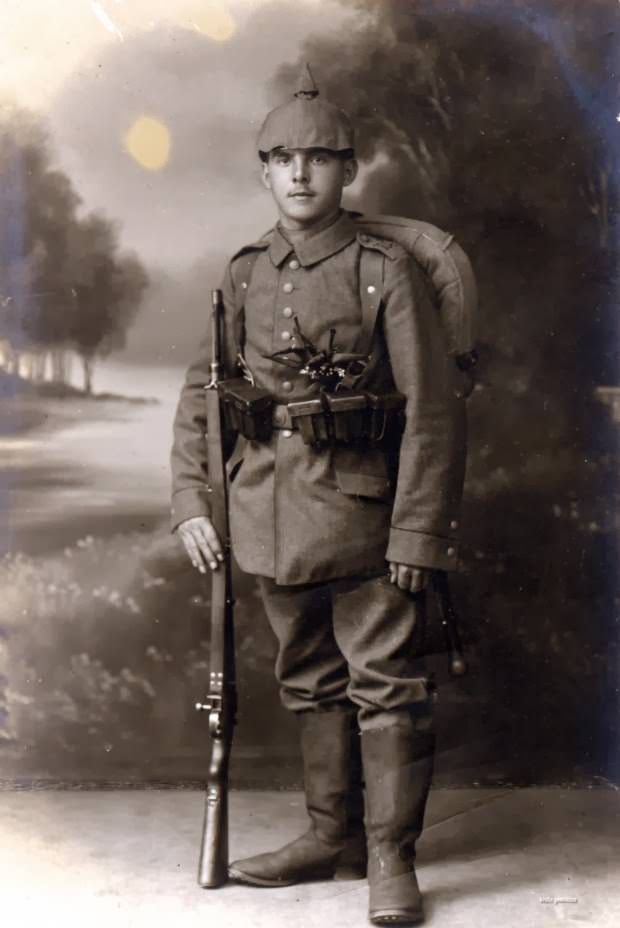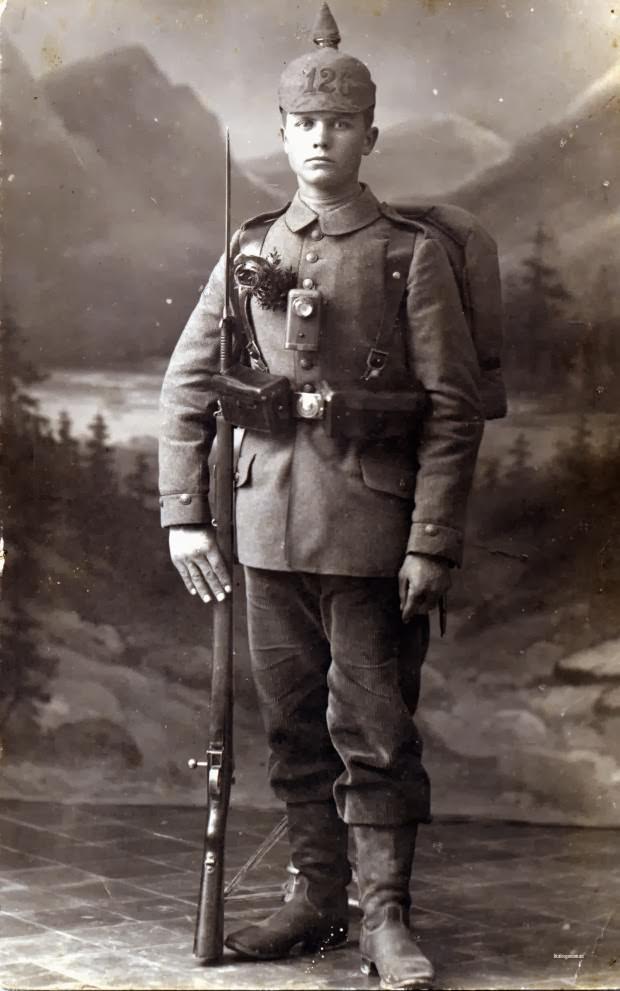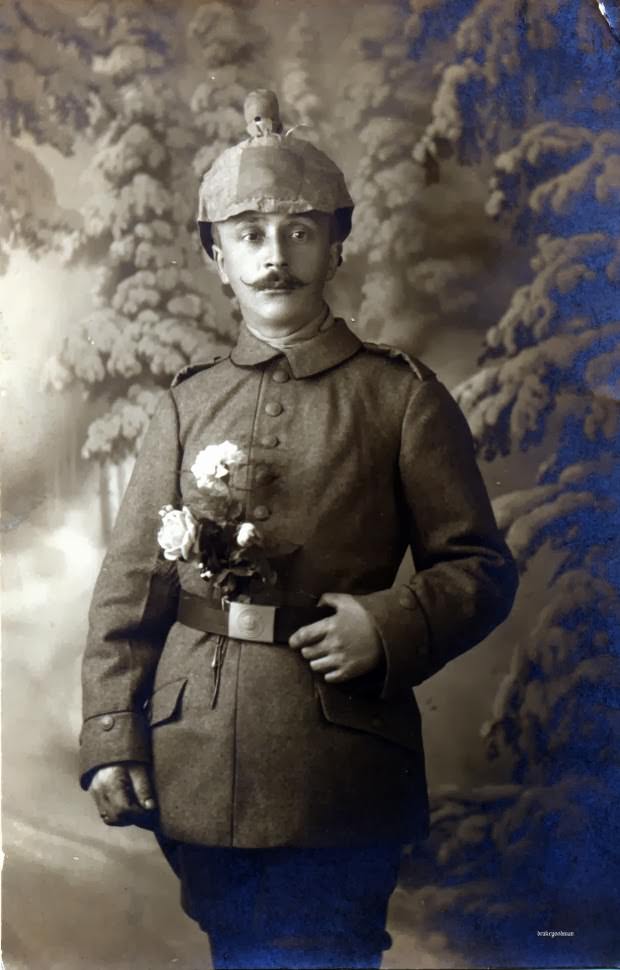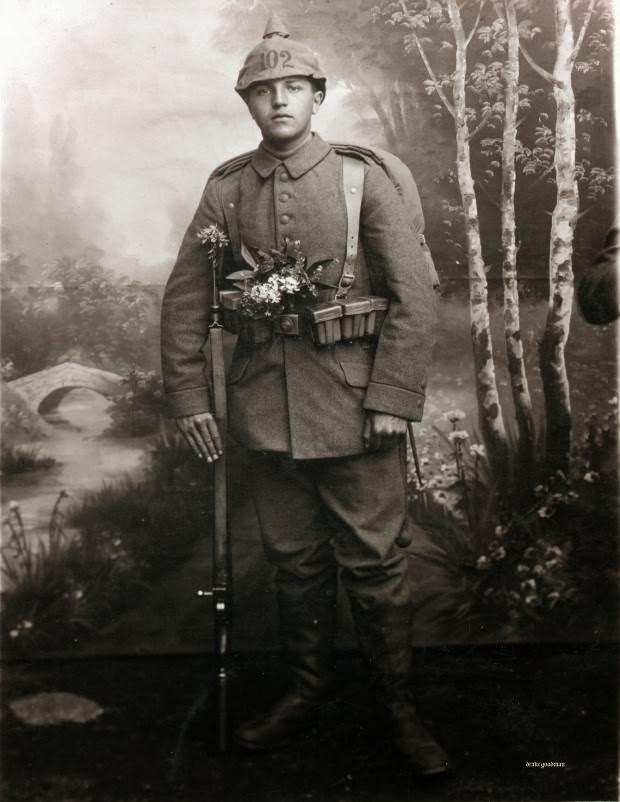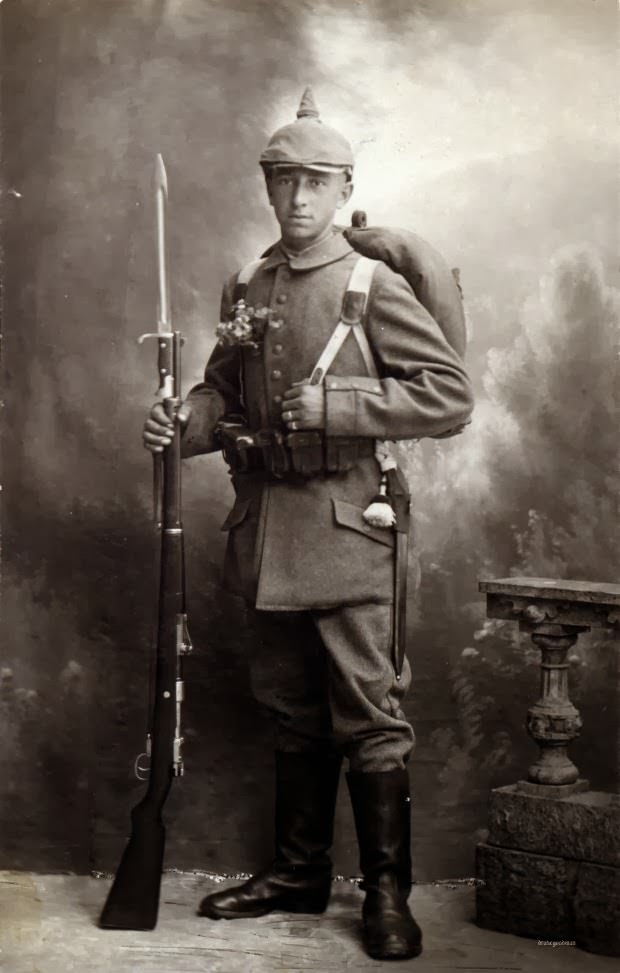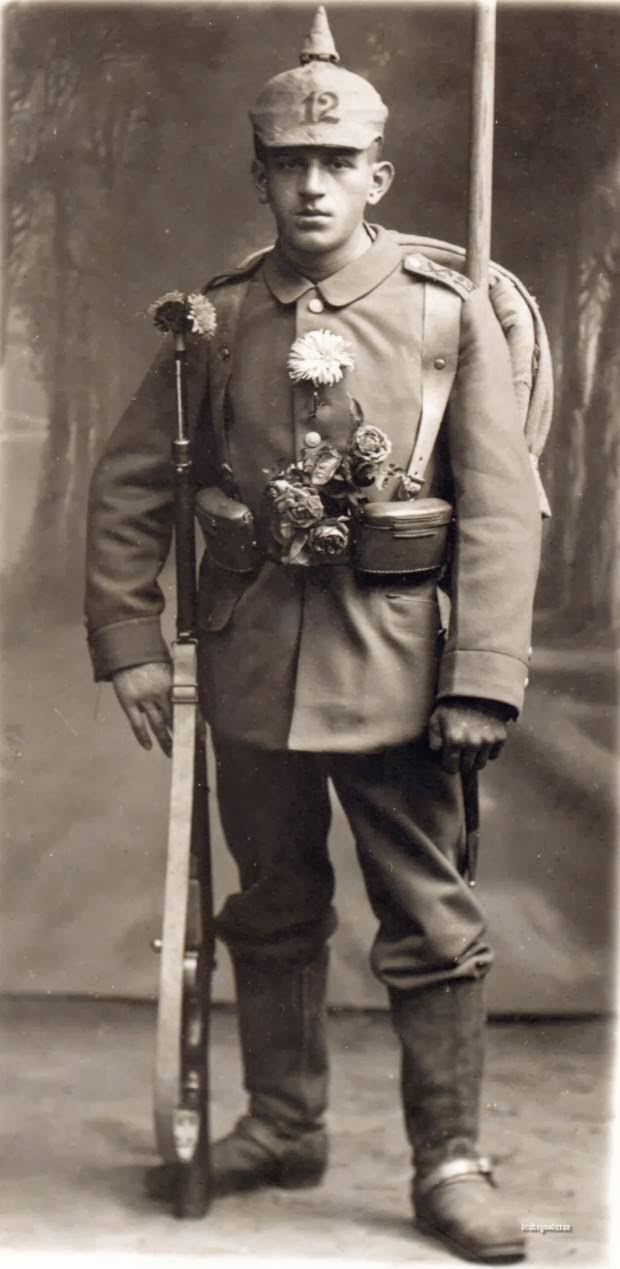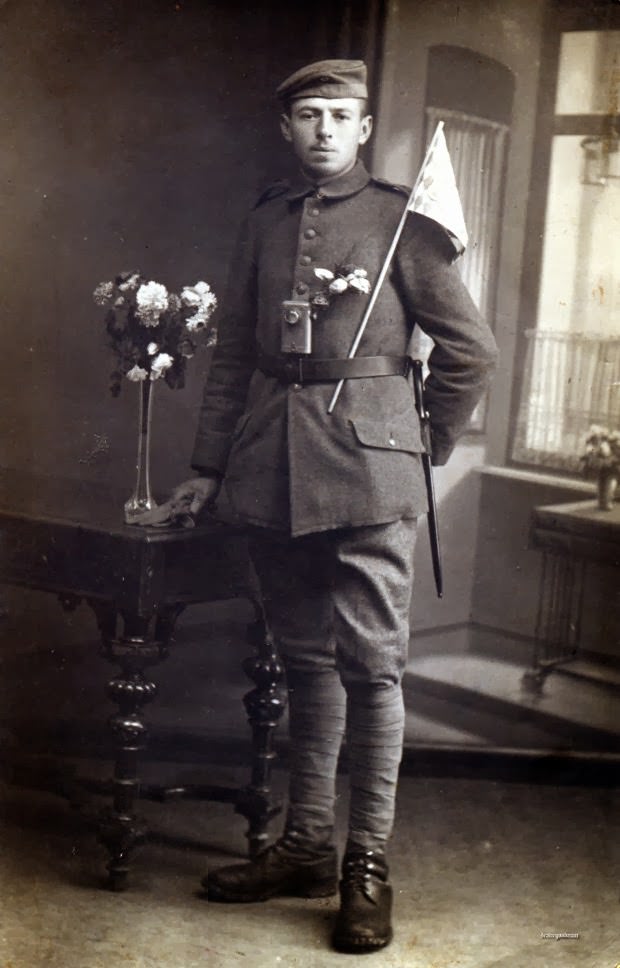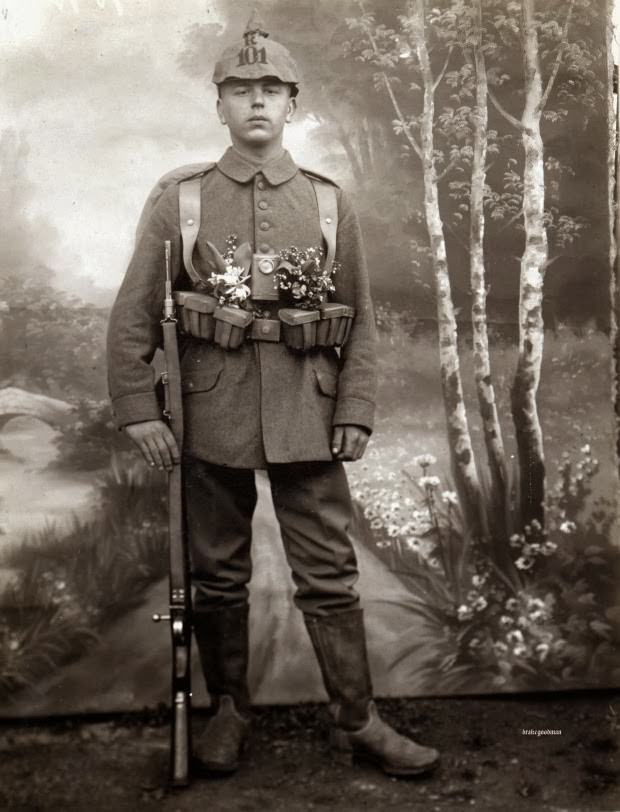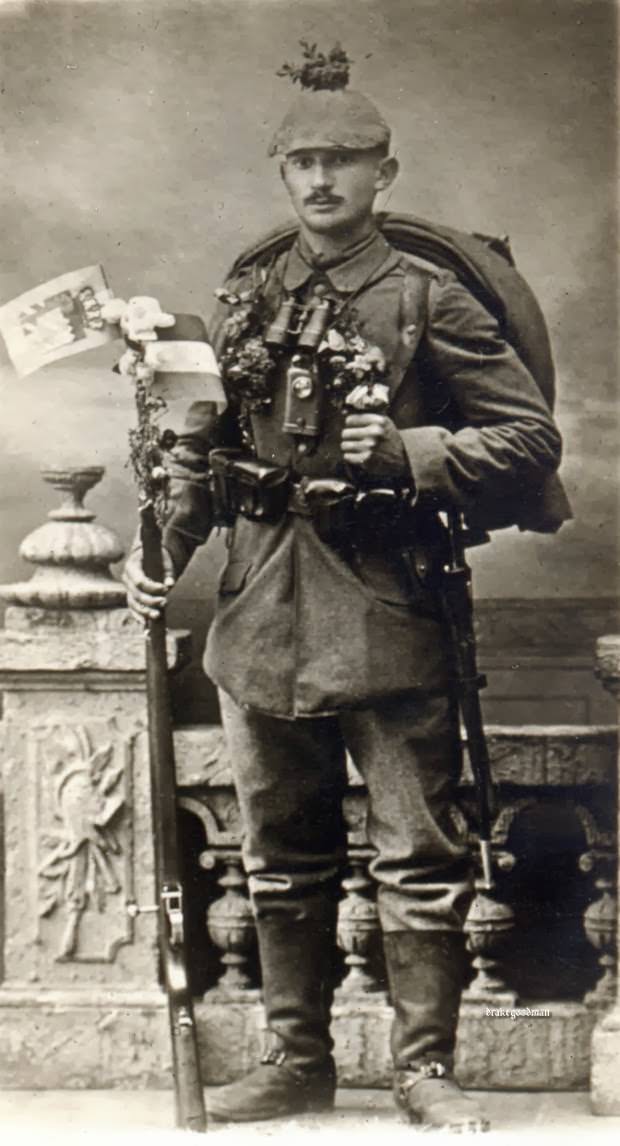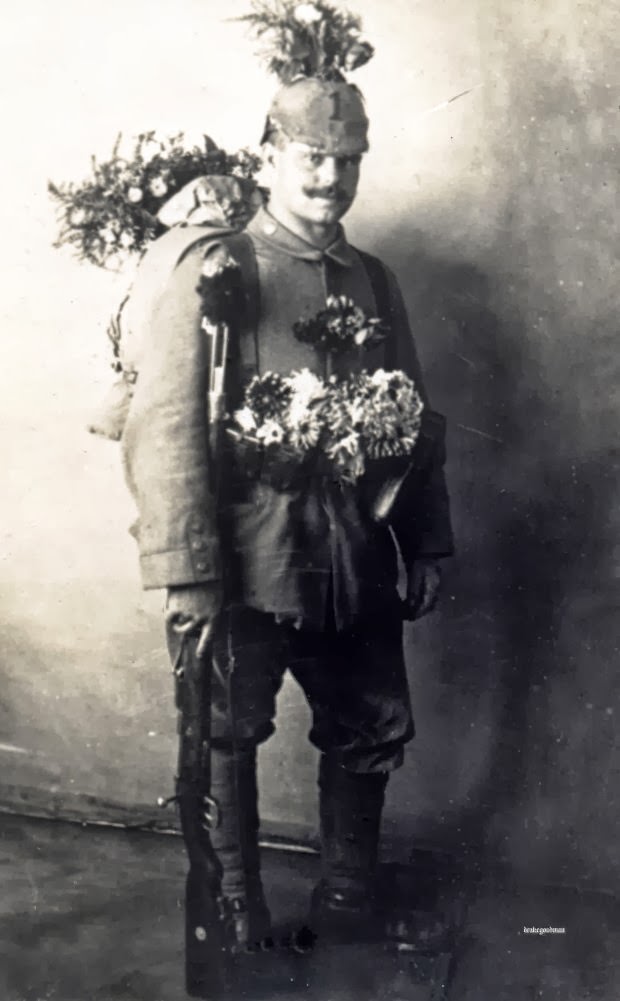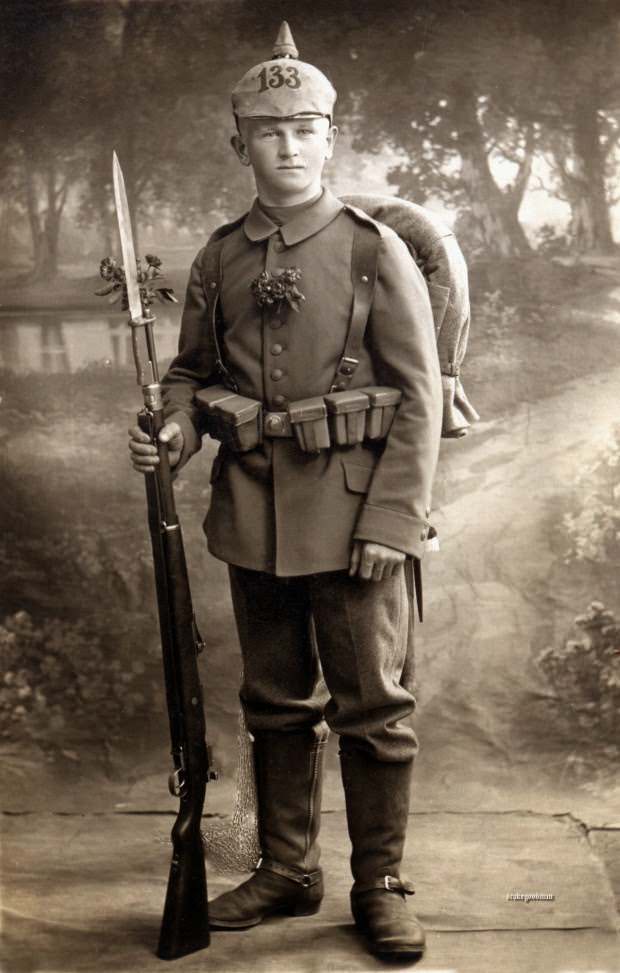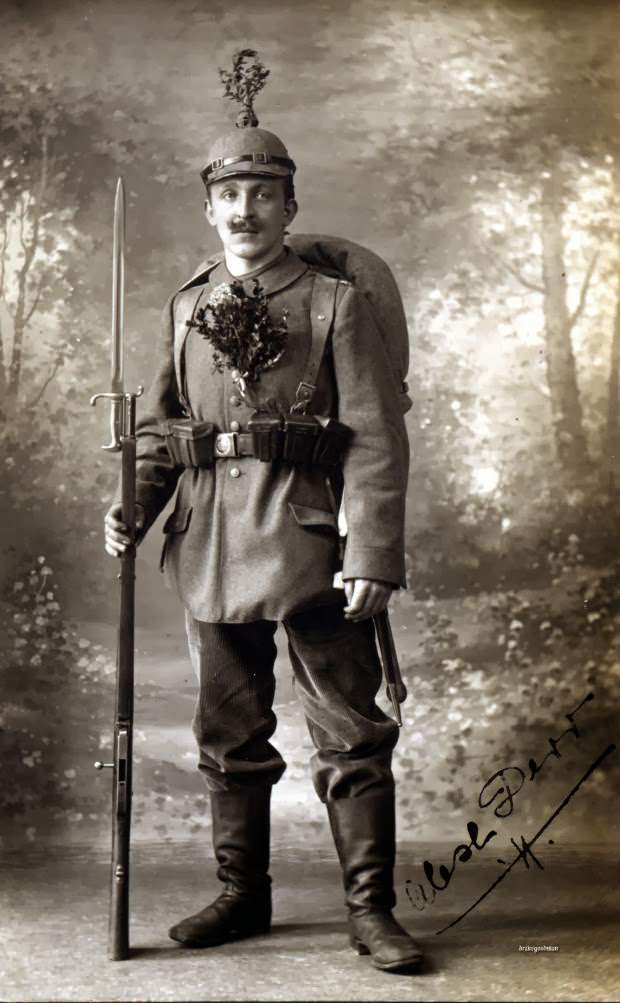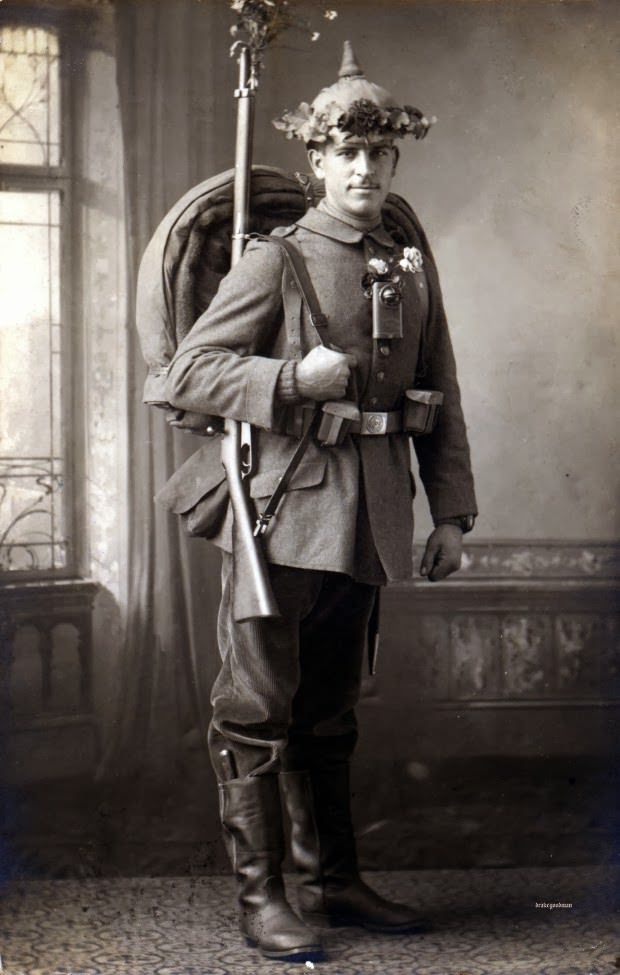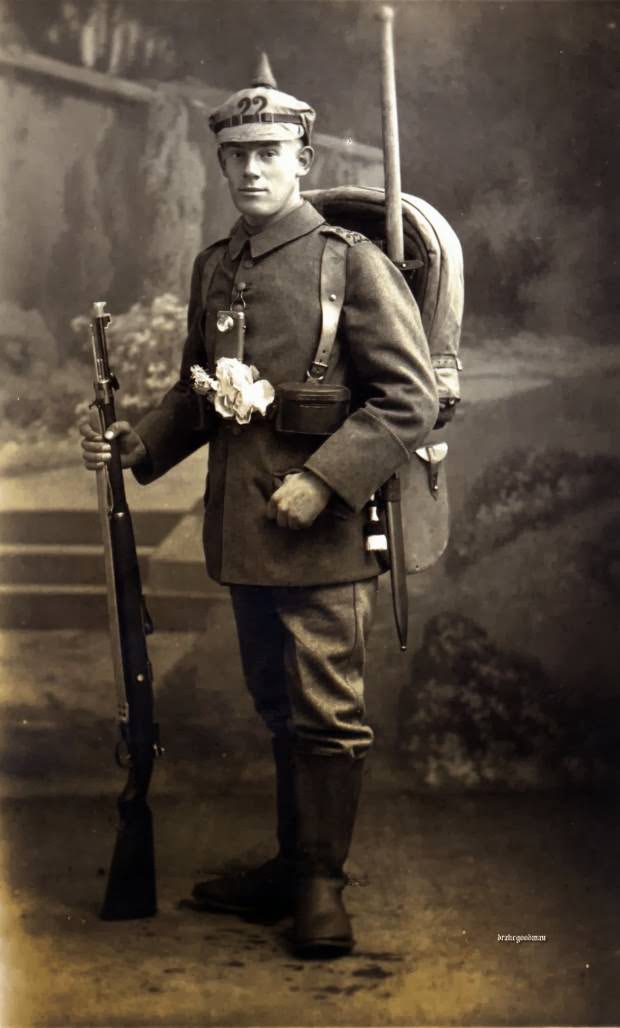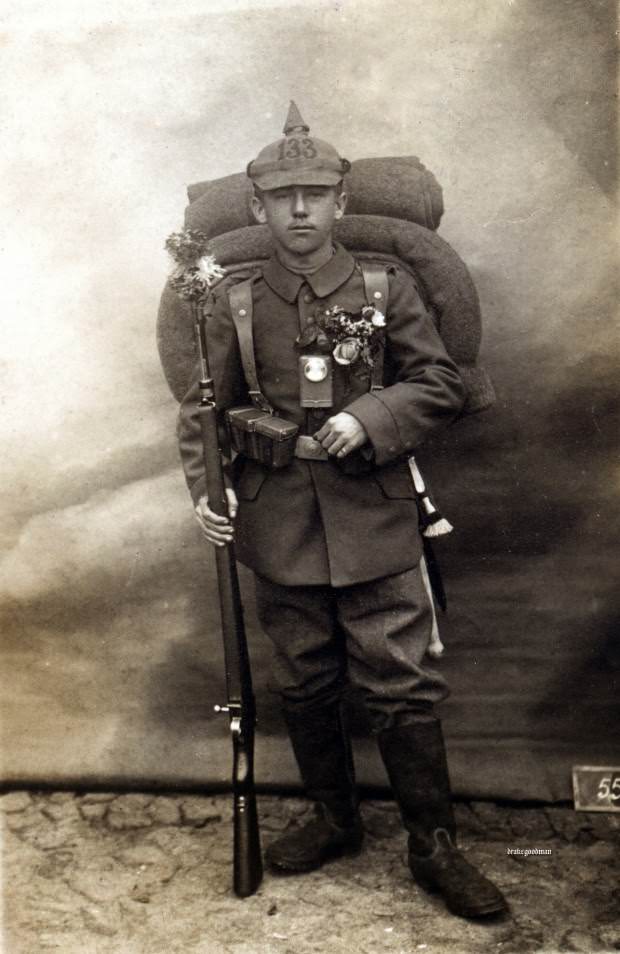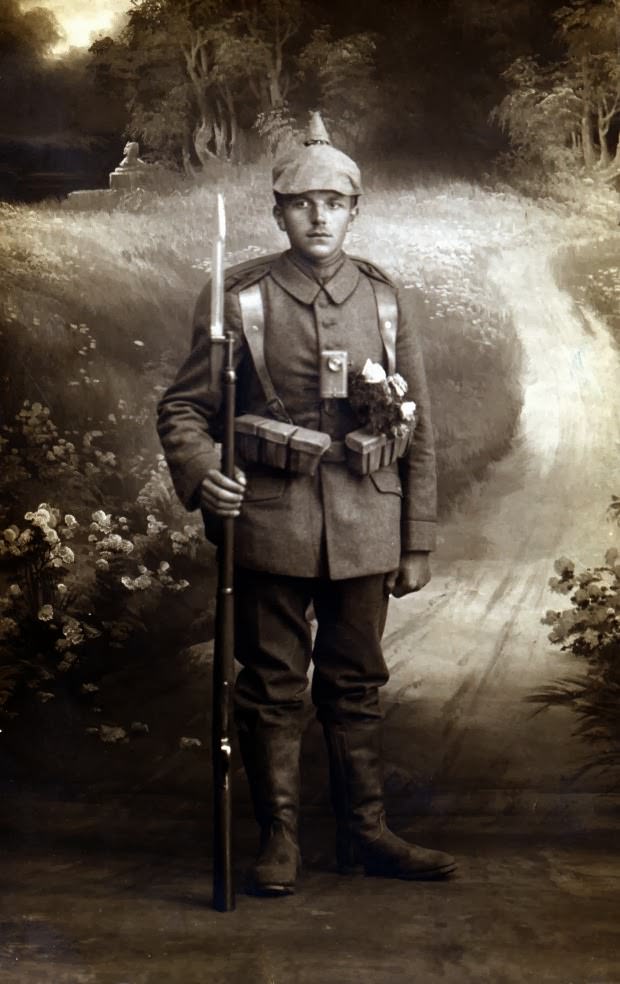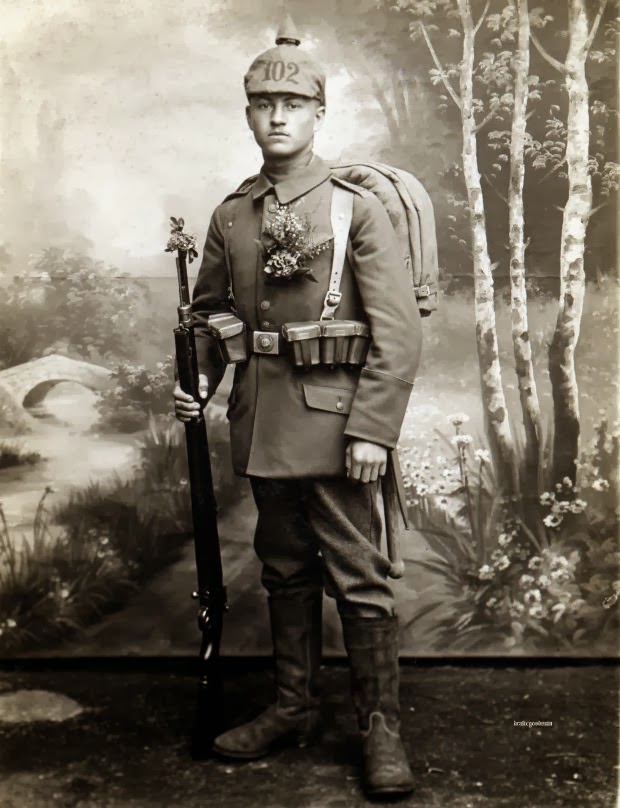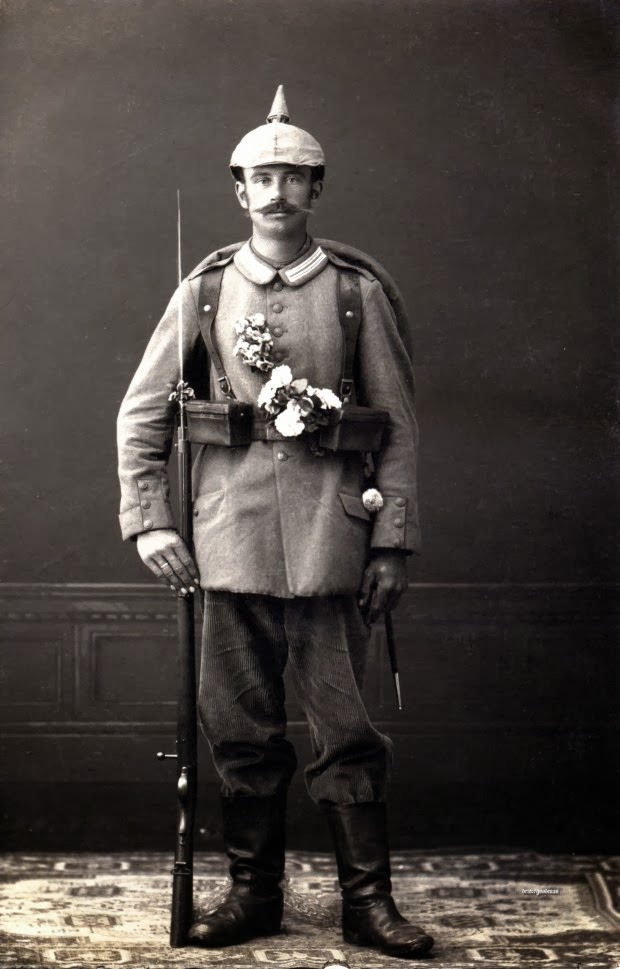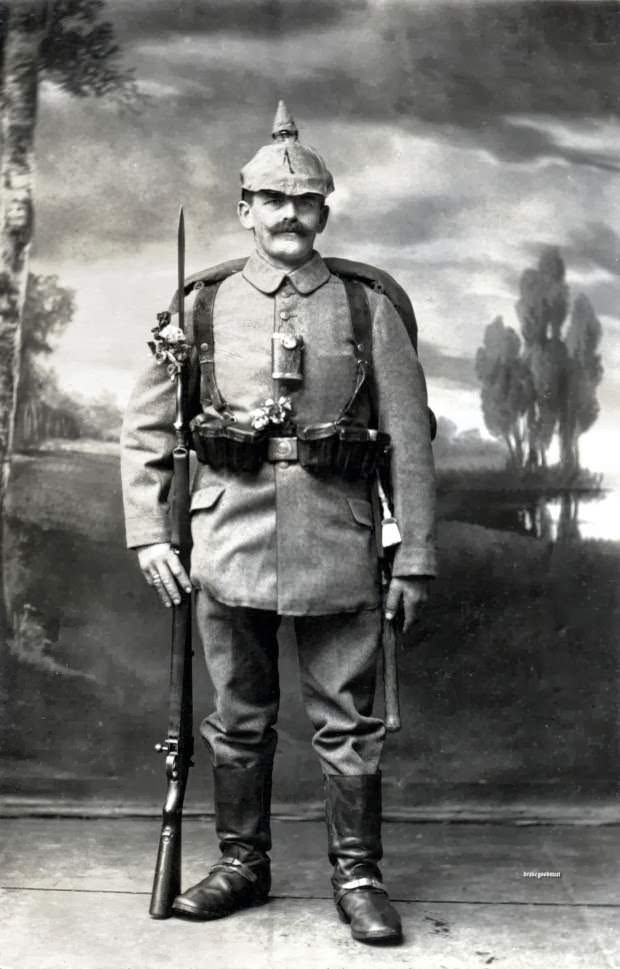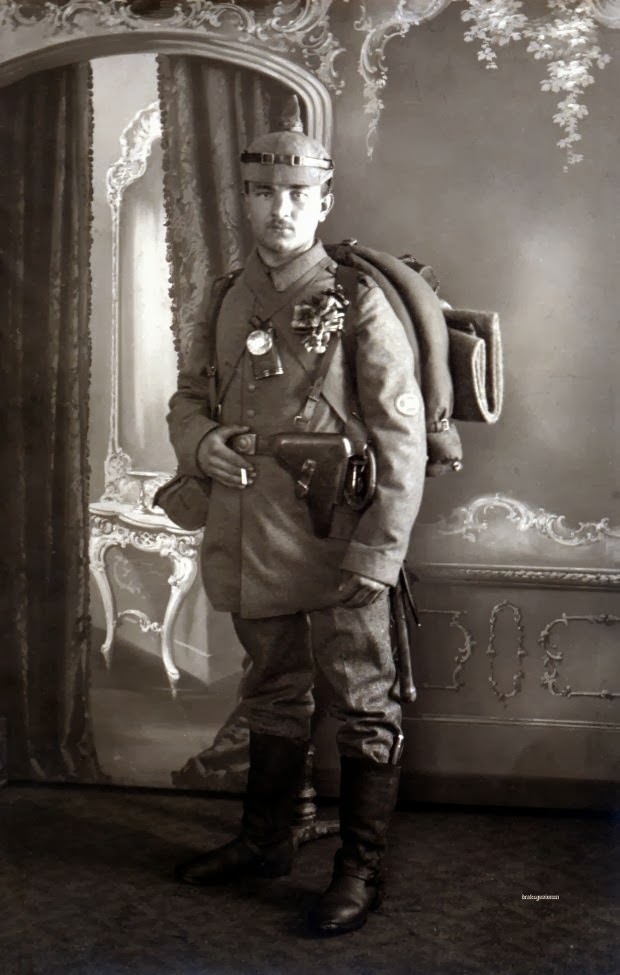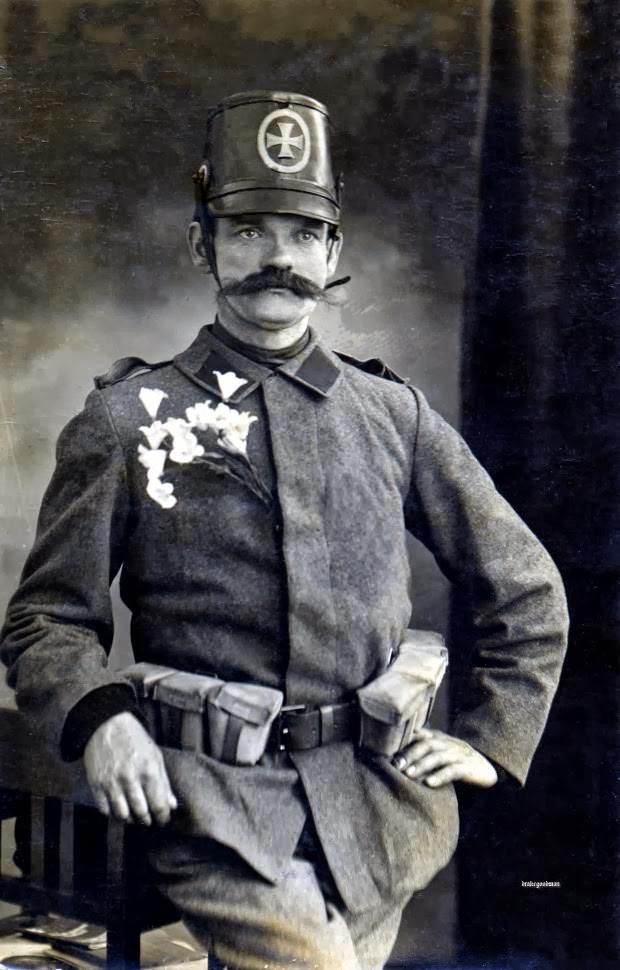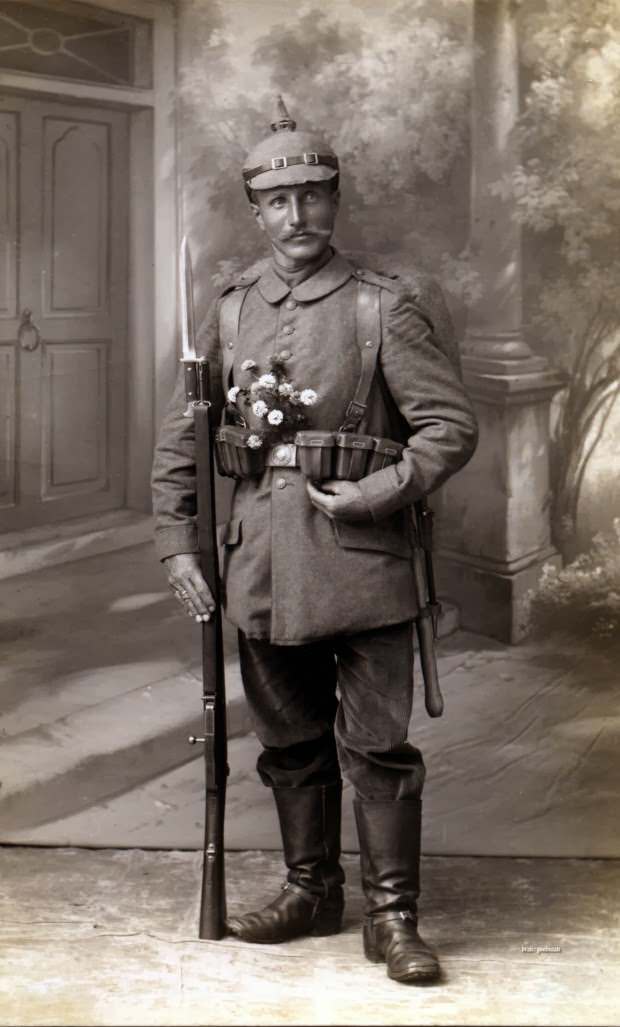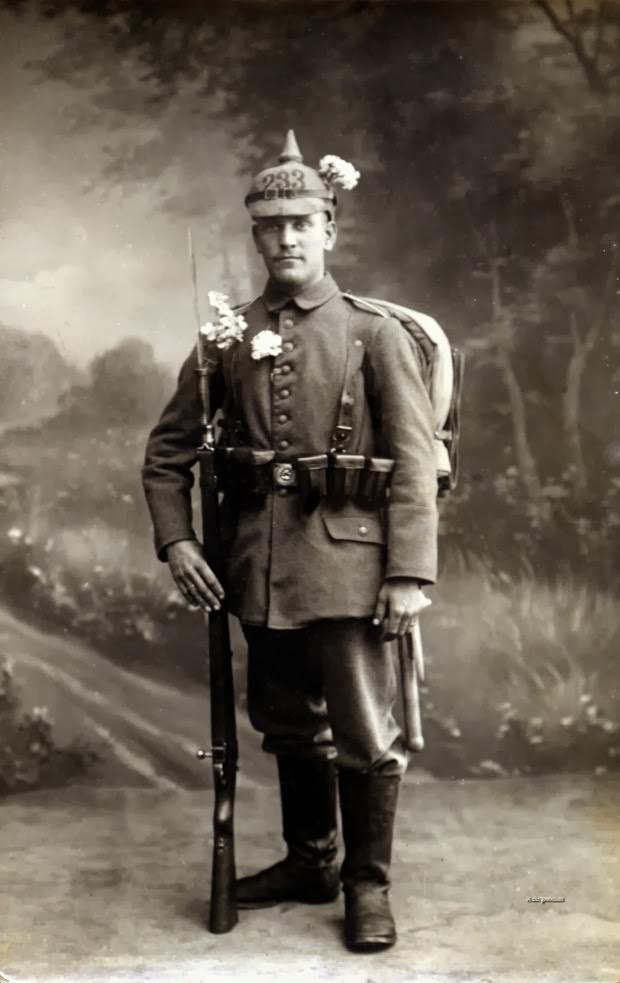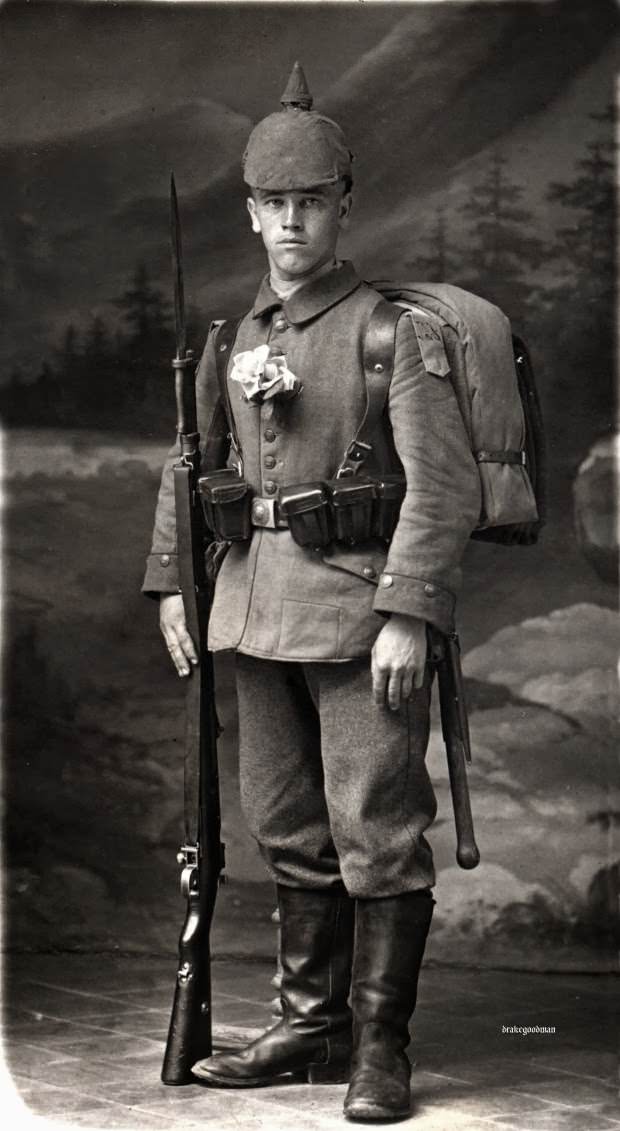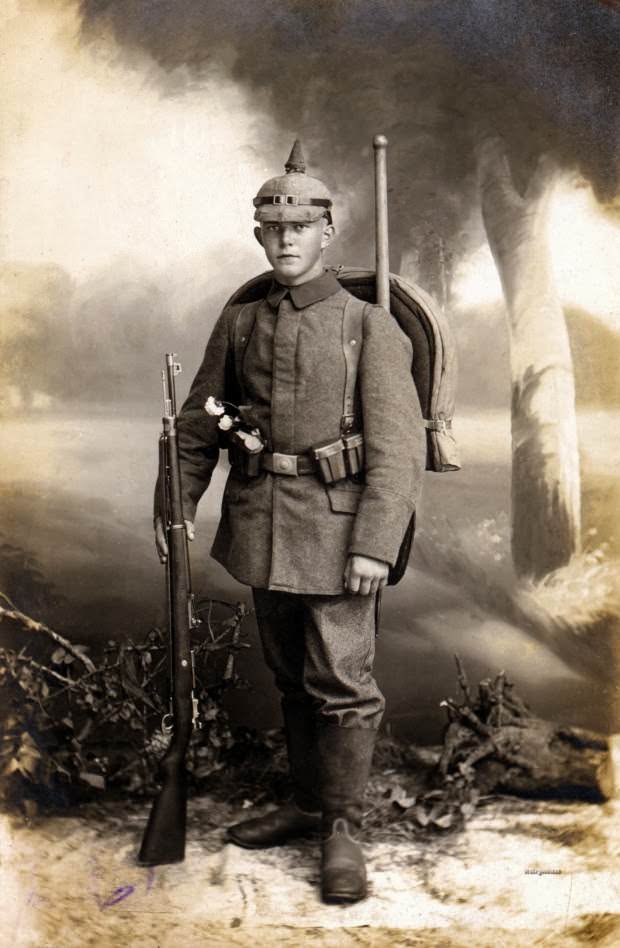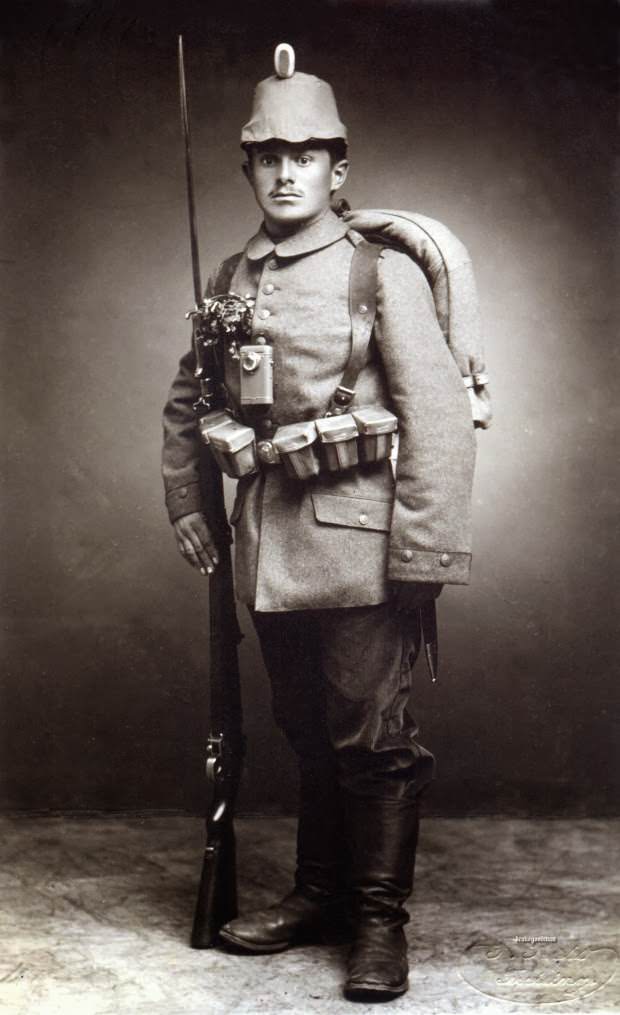During the 1910s, as Europe was facing the realities of World War I, countless soldiers posed for portraits. For German soldiers of this era, getting a photograph taken in a studio was a common practice, especially before heading off to serve or while home on leave. These portraits captured them in their military uniforms, serious or proud. A frequent and often striking detail in many of these photographs is the presence of flowers held by the soldier.
The 1910s were defined by the massive conflict of World War I. Young men enlisted or were called up for military service. Life changed dramatically as they moved from civilian homes to the structured world of the army. Before leaving for the front lines, or when they had brief periods away from active duty, soldiers sought out photography studios. These studios offered a way to capture their image in uniform.
The setting for these photos was always indoors, in a photographer’s studio. Unlike snapshots taken outdoors, these were carefully arranged pictures. The studio provided a controlled environment with artificial lighting. Backdrops were typically used, ranging from plain curtains to painted scenes that might resemble landscapes or simple interiors. The soldier would stand or sit, often in a fixed pose directed by the photographer.
Read more
In these portraits, the soldiers wore their complete military uniforms. This included their tunic, trousers, boots, and cap or helmet. Belts, buckles, and sometimes weapons or other gear were part of the presentation, emphasizing their role as soldiers. Any medals or badges they had earned were proudly displayed. The soldiers often look young in these photos; many were in their late teens or early twenties. Their expressions could range from solemn determination to a posed sense of bravery.
Soldiers are seen holding flowers in various ways. Some hold a single flower, perhaps a rose or a simple bloom, carefully between their fingers. Others hold a small bunch or bouquet. Flowers might be pinned to the soldier’s tunic, tucked into a belt, or placed on a table or prop next to them within the studio setting. The types and colors of the flowers varied, suggesting they were likely locally available or personally chosen.
The inclusion of flowers in a formal military portrait held meaning at the time. Flowers are symbols often associated with life, beauty, peace, and personal affection – a stark contrast to the harsh realities of military life and war. For a soldier leaving for the front, a flower could represent a connection to the home and loved ones they were leaving behind. A flower might have been a gift from a girlfriend, wife, mother, or sister, given as a token of love and remembrance before the soldier departed.


